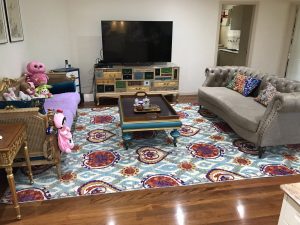Recent posts
Fine rugs have survived centuries because they were made to travel Tribal Rugs were made to be folded compactly and carried by beasts of burden commonly Camels horses donkeys or Yaks. This is why handmade tribal rugs are made as light as is practicable for their purpose. Rugs and other nomadic equipment were the original “baggage allowance”.
Smaller rugs were carried personally by nomads for sitting or sleeping. Manufacturing rugs for light weight and durability has the added advantage that these items are often able to be invisibly repaired. Wool on a wool foundation makes the lightest easy to wash and dry rugs. A “wool on wool” rug is similar to a very large wool pullover and although more difficult to wash requires a similar technique.

Such cosy rugs suited the nomadic lifestyle and cold mountain conditions. Rugs were often used on sand or to cover bare ground. When later on rugs began to be used in permanent homes with level floors it became more important for a rug to lay flat. Cotton began to be used as foundation threads as it gives extra weight and help a rug lay flat and resists movement.
These rugs are called town or city rugs. They are too large and heavy for nomadic people to use. A cotton foundation does mean that a rug will be a little heavier and take longer to dry but the cotton foundation is still repairable and flexible and the rug will still fold compactly. Some special rugs are woven with silk foundation threads and silk and wool pile. These too can be repaired but must be hand washed with extreme care.
Most people do not know that the word “rug” is not Persian or Iranian or even Middle Eastern, The term “rug” is of Scandinavian origin, probably from Old Norse “rogg”, meaning “shaggy tuft”.
In English, the word rug was only used for the first time in the 15th century. Rugs have been being made, loved, shared and naturally often repaired, since before we in the West even had a general word to name them. But whatever name we give them, rugs have always been great at creating an atmosphere of comfort and “Hygge” as they say in Denmark.
Ancient natural dying techniques have increased in popularity in recent times because these natural vegetable dyes are healthier in the home environment and less likely to provoke allergies. Minute particles inevitably break off flooring and furnishings and move through the air so it comes down to you making a choice of breathing natural vegetable dyed silk, wool or cotton or particles of plastic, polyester and synthetic dyes.
Table of Contents
ToggleWITH OVER 40 YEARS OF INDUSTRY EXPERTISE AND KNOWLEDGE, WE ARE PROUD TO BE AUSTRALIA’S PREMIER SUPPLIER OF THE HIGHEST QUALITY HANDMADE RUGS
Sarabi’s Fine Rugs Employs COVID Safe Practices for the Safety and Protection of
Michael: 0405 225 563
Moji: 0416 157 788
Showroom: 02 9417 7829
[email protected]
www.sarabisfinerugs.com.au
303-307 Penshurst St, North Willoughby NSW 2068
Come in and see our Stunning Showrooms
Copyright | Sarabi's Fine Rugs | © 2024 Designed & Developed by Kintye